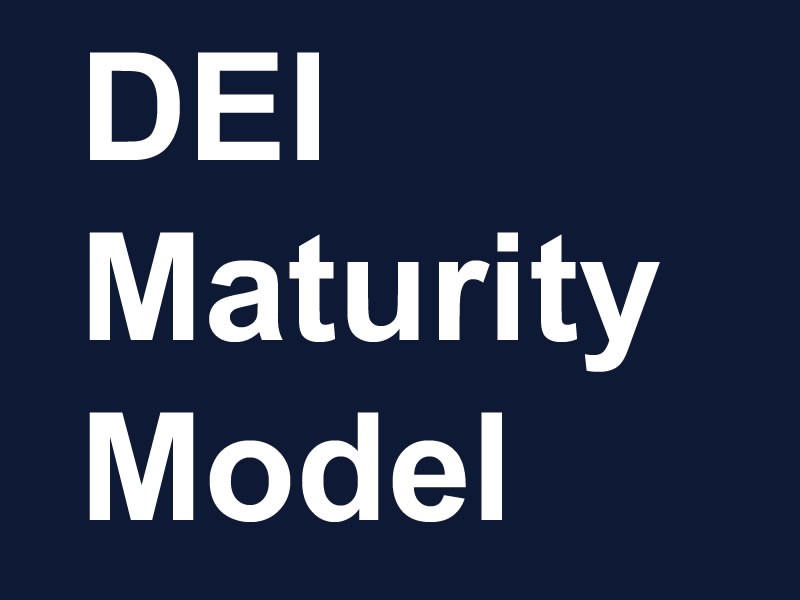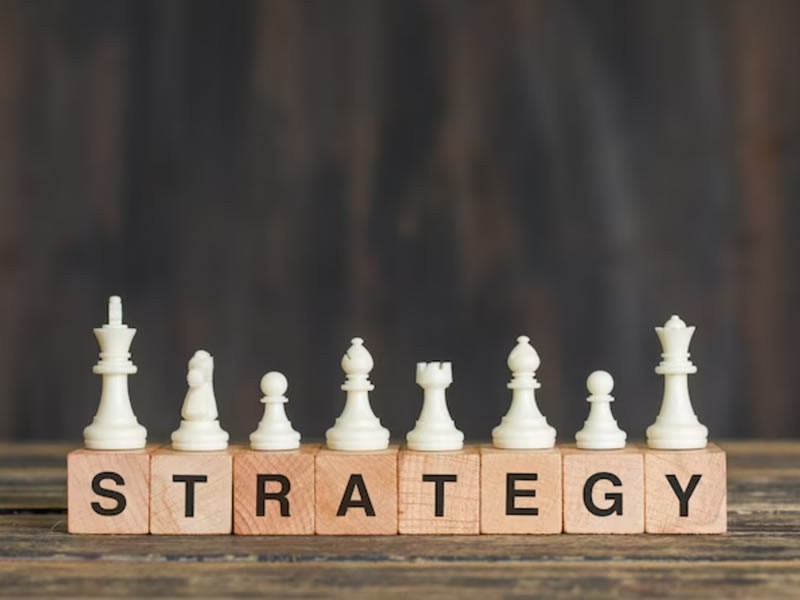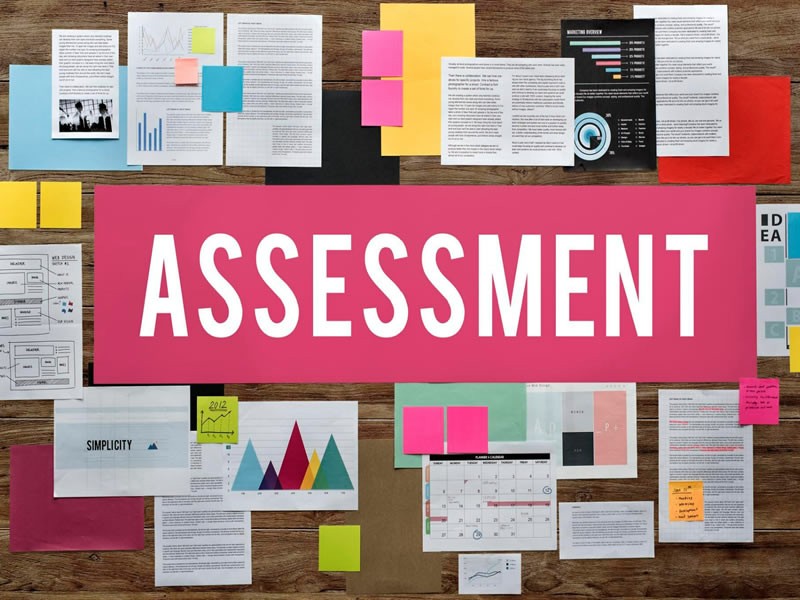Insight Blog
Agility’s perspectives on transforming the employee's experience throughout remote transformation using connected enterprise tools.
14 minutes reading time
(2856 words)
Understanding The Deloitte DEI Maturity Model - A 2024 Comprehensive Guide
Explore the DEI maturity model for effective diversity, equity, and inclusion strategies in organizational development.
The DEI maturity model represents a structured approach to assessing and enhancing diversity, equity, and inclusion within corporate environments.
This model serves as a crucial framework for organizations aiming to not only diversify their workforce but also to foster a culture of equity and inclusion.
In today's globalized business landscape, the significance of these elements cannot be overstated. They are integral to driving innovation, employee engagement, and overall organizational success. Incorporating DEI maturity models into business strategies facilitates a systematic evaluation of current DEI practices. This helps identify areas that need improvement and implement targeted initiatives.
By doing so, organizations can ensure that their DEI efforts are not superficial but ingrained in their operational ethos, leading to sustainable growth and development.
Deloitte's DEI maturity model stands out in this regard. It provides a comprehensive and practical framework for businesses to integrate DEI into their core strategies effectively. This model not only helps in assessing the present DEI status within an organization but also guides the development of a more inclusive and equitable workplace culture.
Deloitte's approach underscores the importance of DEI in modern corporate practices, emphasizing its role in shaping a dynamic, resilient, and forward-thinking business environment.
What Is The DEI Maturity Model?
The DEI maturity model serves as a comprehensive tool for organizations to assess and enhance their practices in diversity, equity, and inclusion. It provides a structured framework to systematically evaluate an organization's DEI efforts across various dimensions and stages of implementation.
The purpose of this model is to offer a clear roadmap for continuous improvement in creating a diverse, equitable, and inclusive work environment.
By identifying specific areas of strength and opportunities for growth, the DEI maturity model aids in strategizing more effective DEI policies and practices, ensuring they are deeply embedded within the organization's culture and operational strategies.
The Evolution of DEI Maturity Models in Business Strategy
The DEI maturity model has evolved significantly as an integral component of contemporary business strategy. Initially, corporate efforts in diversity, equity, and inclusion were often fragmented and reactive, lacking a cohesive strategic approach.
However, as the business world grew more aware of the profound benefits of a diverse and inclusive workplace, the need for a structured framework became apparent. This led to the development of DEI Maturity Models, which provide a systematic, staged approach to embedding DEI principles into the fabric of an organization.
These models have transformed DEI from a peripheral initiative to a central strategic pillar. Businesses now view DEI as a driver of innovation, employee engagement, and market competitiveness.
The evolution of these models reflects a broader shift in organizational priorities, recognizing that a commitment to diversity and inclusion is not just a moral imperative but also a key factor in achieving long-term business success.
This shift signifies a profound change in how companies approach DEI, making it a fundamental aspect of their overall strategy.
Role of the DEI Maturity Model in Organizational Development
The DEI maturity model plays a pivotal role in organizational development by providing a clear framework for embedding diversity, equity, and inclusion into corporate culture and operations.
This model guides organizations in systematically assessing and enhancing their DEI initiatives, ensuring that these efforts are not superficial but deeply integrated.
By outlining stages and best practices, the model aids in the creation of a more inclusive work environment, which in turn fosters innovation, employee satisfaction, and improved performance.
Thus, the DEI maturity model is not just a tool for assessment but a strategic roadmap driving comprehensive, sustainable development across all organizational facets.
DEI Strategy Examples
DEI strategy examples often highlight innovative approaches to fostering diversity, equity, and inclusion in the workplace.
For instance, a tech company might implement a hiring strategy focused on increasing representation from underrepresented groups, using targeted outreach and partnerships with diverse organizations.
Another example is a multinational corporation establishing mentorship programs specifically designed for employees from diverse backgrounds, fostering career development and leadership skills.
Additionally, a retail business might introduce mandatory bias training for all employees, aiming to create a more inclusive and equitable work environment.
These strategies demonstrate practical ways organizations can embed DEI principles into their operations, leading to a more diverse, equitable, and inclusive workplace.
Understanding The Deloitte DEI Maturity Model
The Deloitte DEI maturity model is a sophisticated framework designed to guide organizations in effectively embedding diversity, equity, and inclusion into their core strategies and operations.
This model, distinct in its approach, offers a comprehensive assessment tool that enables businesses to gauge their current DEI status and provides a clear pathway for progression. Deloitte's framework is structured around several key dimensions, each focusing on different aspects of DEI, such as leadership commitment, inclusive culture, diverse talent, and equitable practices.
A unique feature of this model is its emphasis on measurable outcomes and accountability. It encourages organizations to not only implement DEI initiatives but also to track their impact and effectiveness over time. This approach ensures that DEI efforts are result-oriented and aligned with broader business objectives.
Furthermore, the Deloitte DEI maturity model is dynamic and adaptable, recognizing that DEI is an evolving area with varying challenges and opportunities across different industries and organizations.
This flexibility allows the model to be tailored to the specific needs and contexts of different businesses, making it a versatile tool for organizations at any stage of their DEI journey.
In essence, Deloitte's DEI maturity model serves as a strategic compass, guiding organizations toward a more inclusive and equitable future while ensuring that their DEI efforts contribute meaningfully to overall organizational success.
Key Components and Principles of the Model
The Deloitte DEI maturity model is anchored in several key components and principles that form the backbone of its framework, ensuring a holistic approach to embedding diversity, equity, and inclusion in organizational culture. Firstly, the model emphasizes leadership commitment as a foundational element.
This involves top-level executives actively advocating for and driving DEI initiatives, signifying the importance of DEI at the highest organizational levels.
Another critical component is the establishment of an inclusive culture.
This focuses on creating an environment where differences are not just accepted but valued, encouraging open dialogue, mutual respect, and a sense of belonging among all employees. The model also stresses the importance of recruiting, retaining, and developing diverse talent, recognizing that a varied workforce is key to fostering creativity and innovation.
Equitable practices and policies form another cornerstone of the model.
This entails implementing fair and unbiased systems for career progression, compensation, and benefits, ensuring all employees have equal opportunities to succeed. Additionally, the model advocates for continuous learning and development in DEI, promoting an ongoing process of education, self-reflection, and improvement.
Lastly, Deloitte's DEI maturity model underscores the need for accountability and measurement.
This involves setting clear DEI goals, tracking progress, and adjusting strategies as needed, ensuring that DEI efforts are impactful and aligned with broader business objectives.
These components and principles collectively guide organizations in creating a truly inclusive and equitable workplace.
Follow us and access great exclusive content everyday: Follow us on Google News
How Deloitte's Model Differs from Other DEI Models
Deloitte's DEI maturity model distinguishes itself from other DEI models through several key differentiators.
A primary aspect of this distinction lies in its comprehensive approach. While many DEI models focus primarily on diversity metrics, Deloitte's framework encompasses a broader spectrum, emphasizing equity and inclusion as equally vital components.
This holistic perspective ensures that the model addresses not just the composition of the workforce but also the cultural and systemic factors that influence an equitable and inclusive work environment.
Another differentiator is the model's emphasis on measurable outcomes and accountability. Deloitte's framework integrates robust metrics and analytics to assess the impact of DEI initiatives, going beyond surface-level measures to evaluate deeper systemic changes. This focus on tangible results ensures that organizations can track their progress effectively and make data-driven decisions.
Deloitte's model is tailored to suit varying organizational needs and maturity levels. Unlike one-size-fits-all approaches, it offers flexibility, allowing organizations to adapt the model based on their specific context, industry, and DEI journey stage. This adaptability makes it a practical tool for a wide range of organizations, regardless of their current DEI status.
Lastly, Deloitte's approach incorporates continuous evolution and learning. Recognizing that DEI is a dynamic field, the model is designed to evolve in response to changing societal norms and organizational learning, ensuring its relevance and effectiveness over time.
These distinctive features make Deloitte's DEI maturity model a pioneering tool in the domain of organizational DEI development.
The Five Stages of DEI Maturity
The five stages of DEI maturity in Deloitte's model provide a structured approach to advancing an organization's diversity, equity, and inclusion initiatives. Each stage represents a progressive level of DEI integration and sophistication.
Phase 1
The initial phase, awareness, serves as the foundational step towards fostering greater intentionality regarding Diversity, Equity, and Inclusion (DEI) within an organization.
This phase can be prompted by external factors such as legal actions or public criticisms, as well as internal occurrences like a distressing incident. During this stage, companies may issue public statements expressing their dedication to DEI, but it is crucial for them to be transparent about their internal DEI initiatives, particularly with leadership.
Leaders must grasp the personal significance of DEI, establish a shared internal vision for DEI efforts, and select a specific tactical objective to prioritize.
Additionally, companies need to acknowledge their current level of DEI maturity and refrain from drawing comparisons to organizations that are more advanced in the DEI process.
You may also like: Best Apps for Employees: UPDATED 2022 – A Complete Guide
Phase 2
The succeeding phase, compliance, revolves around fulfilling legal and regulatory obligations concerning diversity, encompassing laws related to equal employment opportunities.
This entails the establishment of diversity training initiatives, mentorship programs, the implementation of scorecards, and the utilization of performance scores for bonus determinations.
While achieving compliance is essential, it is crucial for companies to avoid becoming stagnant in this stage and instead set objectives that extend beyond mere compliance targets.
Phase 3
The third phase, tactical, encompasses the implementation of Diversity, Equity, and Inclusion (DEI) initiatives, including the formation of employee resource groups and teams dedicated to instituting DEI processes.
there may be advancements in shaping the organizational culture during this stage, the absence of a comprehensive strategic DEI approach that permeates the entire business becomes evident.
To progress beyond this stage, it is imperative to articulate an overarching DEI strategy, standardize DEI efforts across various units, integrate DEI work across the organization, and consider the broad impact of DEI efforts on both internal and external stakeholders.
Free ebook: How To Get Your Intranet Off The Ground
Phase 4
In the fourth phase, integration signifies the complete infusion of Diversity, Equity, and Inclusion (DEI) into every facet of the organization's operations and cultural fabric.
This entails not only aligning internal and external initiatives but also establishing a cohesive connection between top-down and bottom-up efforts. The focus extends beyond merely acknowledging the impact of DEI; it becomes an integral part of the organization's decision-making processes, influencing policies and practices at every level.
During this advanced stage, DEI is seamlessly woven into the organizational fabric, transcending mere compliance or tactical implementation.
The holistic integration of DEI principles ensures that the organization consistently considers diversity, equity, and inclusion in strategic planning, creating a sustainable and inclusive environment.
This comprehensive approach extends beyond internal operations to encompass the organization's relationship with external stakeholders, recognizing and addressing the broader impact of DEI efforts on the community, industry, and society at large.
Phase 5
In the culminating phase, sustainability, attainment is reached when Diversity, Equity, and Inclusion (DEI) seamlessly intertwine with the organization's culture and operations, shedding its status as a distinct initiative.
A robust DEI leadership team assumes a pivotal role, overseeing the integration, with regular data collection and analysis employed to monitor progress and pinpoint areas necessitating improvement. Systems are established to enforce accountability for the organization's DEI commitments.
In this phase, the organization not only embraces an enduring commitment to learning and enhancement but also recognizes DEI as a perpetual journey. It goes beyond maintaining efforts; the organization fosters a truly inclusive culture, emphasizing continuous improvement.
At the sustainability stage, the organization demonstrates the capacity to uphold its DEI endeavors over time, ensuring the creation and perpetuation of a genuinely inclusive and diverse environment.
Characteristics and Goals of Each Stage
Each stage of DEI maturity carries distinct characteristics and goals.
The Compliance-Driven stage aims to fulfill legal requirements with basic DEI actions.
The Programmatic stage progresses towards developing specific DEI initiatives, laying the groundwork for broader integration. In the Leader-Led stage, the focus shifts to aligning DEI with strategic business goals driven by leadership commitment.
The Integrated stage aims for a holistic incorporation of DEI into every aspect of business, enhancing overall organizational effectiveness. The final Sustainable stage focuses on ensuring the long-term impact and cultural embedment of DEI, characterized by continuous innovation and evolution in DEI practices.
DEI Maturity Model Assessment
Approaches to Assessing an Organization's DEI Maturity Level
DEI maturity model assessment is a critical process that helps organizations gauge their current position and progress in diversity, equity, and inclusion initiatives.
This assessment typically begins with a comprehensive internal audit, examining existing DEI policies, practices, and outcomes. Key stakeholders, including employees at various levels, are often involved in this process through surveys and interviews to provide a 360-degree view of the organization's DEI environment.
Benchmarking against industry standards and best practices is another common approach, allowing organizations to understand their position relative to peers and identify areas for improvement.
Additionally, evaluating the alignment of DEI efforts with overall business objectives is crucial, as it ensures that DEI initiatives are not just standalone programs but integral parts of the organizational strategy.
Tools and Techniques Used in the DEI Maturity Assessment
When it comes to tools and techniques used in the DEI Maturity Assessment, organizations often employ a mix of quantitative and qualitative methods. Surveys and questionnaires are widely used to gather data on employee perceptions, experiences, and demographics. Focus groups and interviews provide deeper insights into the nuances of the workplace environment and DEI culture.
Data analytics plays a crucial role in analyzing workforce demographics, participation in DEI programs, and trends over time. Benchmarking tools enable comparison with industry standards, while self-assessment checklists guide organizations in evaluating their practices against established DEI criteria.
These tools and techniques offer a comprehensive approach to assessing and advancing an organization's DEI maturity.
How to Use a DEI Maturity Model
A Diversity, Equity, and Inclusion (DEI) Maturity Model critically assesses a company's journey in fostering diversity, equity, and inclusion, pinpointing its current status and charting a course for future progress.
The model featured at the top of this page, sourced from Deloitte, categorizes the maturation of DEI into four key phases: Compliance, Programmatic, Leader-Led, and Integrated.
In the initial Compliance phase, the focus centers on meeting set targets, viewing the lack of diversity as a problem to be managed and resolved. Initiatives such as Equal Opportunity and Affirmative Action find their place here.
Transitioning to the Programmatic phase, the emphasis remains on hitting diversity targets, but activities like trainings and webinars become more prevalent. Conversations on the ground gain momentum, amplifying voices from specific demographic groups within the company.
The third phase marks the shift to Leader-Led initiatives. Here, the focus moves beyond mere target achievement to addressing systemic inequities within the company. Leadership, including the CEO and senior executives, takes a more active role in setting goals.
The fourth and final phase, Integrated, signifies DEI becoming a top organizational priority. Inclusion practices are widespread throughout the entire organization, permeating all aspects of its operations.
Notably, the transition from reactive to proactive efforts occurs between phases 2 and 3. This transformative period signifies the evolution of DEI efforts from mandated reactions—responses to factors such as employee feedback, cultural shifts, or directives from higher-ups to "fix it"—to a proactive movement within the entire company. Diversity, equity, and inclusion are actively sought out and integrated into the company's ethos during this stage.
Wrapping up
Understanding and implementing the DEI maturity model is vital for organizations striving to create a diverse, equitable, and inclusive workplace. This model offers a framework for assessing current DEI efforts and provides a clear path for continuous improvement.
By embracing this model, organizations can foster a culture that values diversity and inclusion, enhancing innovation, employee engagement, and overall success. Ultimately, the DEI maturity model is more than a tool; it's a strategic imperative for sustainable organizational growth and societal progress.
Categories
Blog
(2638)
Business Management
(325)
Employee Engagement
(212)
Digital Transformation
(176)
Growth
(120)
Intranets
(119)
Remote Work
(61)
Sales
(48)
Collaboration
(37)
Culture
(29)
Project management
(29)
Customer Experience
(26)
Knowledge Management
(21)
Leadership
(20)
Comparisons
(6)
News
(1)
Ready to learn more? 👍
One platform to optimize, manage and track all of your teams. Your new digital workplace is a click away. 🚀
Free for 14 days, no credit card required.

















